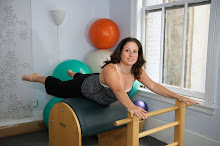
In class there is usually at least one woman who points to her lower abdomen and tell me about a pulling sensation. I am never one to diagnose anything, but something called "round ligament pain" is pretty common. These ligaments help support the uterus and they get pulled more and more as the pregnancy continues.
Some things to do:
- Stretch and do prenatal yoga
- Drink lots of water
- Make sure you are getting enough calcium and magnesium in your diet
- Try bringing your knees in my your chest, especially if you feel a sneeze or cough coming on.
- Change positions to prevent the ligaments from contracting. Try alternating to both the right and left sides when sleeping.
- Use a pregnancy pillow while sleeping, placing a pillow between your knees and your ankles to stabilize the pelvis
- Try a pregnancy support belt
- Try acupuncture


